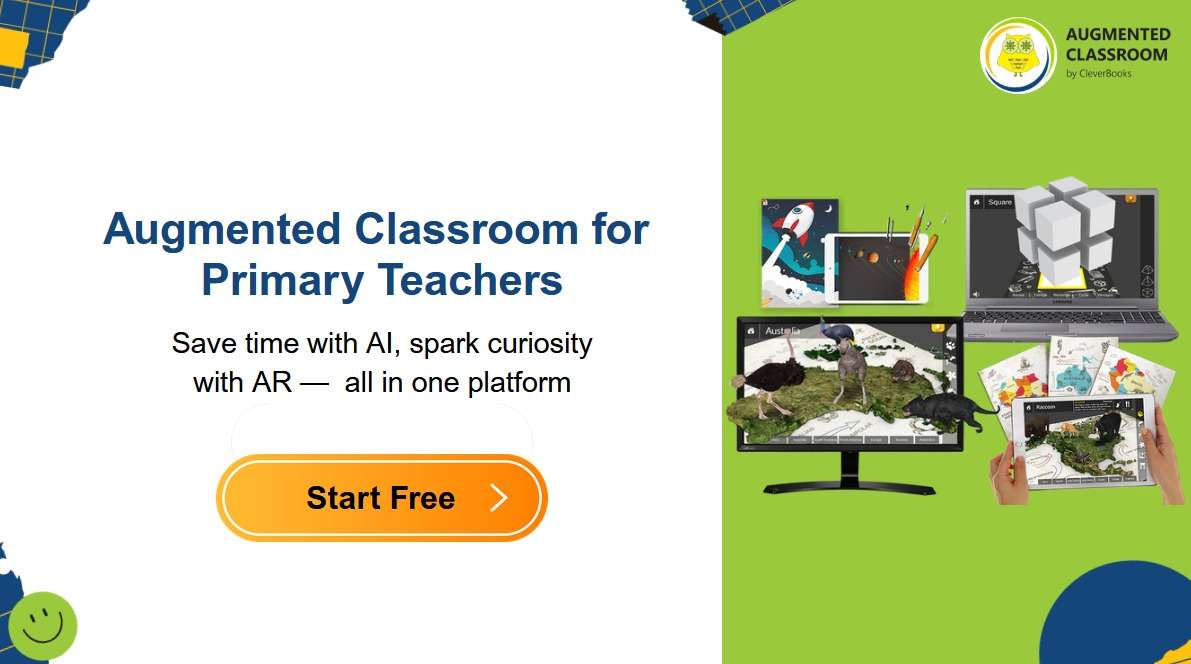For many students, math becomes intimidating the moment it moves beyond counting. Abstract concepts like geometry and fractions can feel confusing when they only exist on a worksheet. Drawing circles and shading parts of them works—but it doesn’t always stick.
Enter Augmented Reality (AR). By turning shapes and fractions into interactive, 3D experiences, AR helps students see math not as numbers on paper, but as objects they can touch, rotate, and explore.

Why AR Works for Shapes and Fractions
Math is at its best when it’s visual and hands-on. AR brings this to life by connecting numbers with real-world, interactive models.
- Concrete Understanding: Instead of just “1/4 of a circle,” students can hold up a tablet and see a pizza sliced into quarters. They can rotate it, remove a slice, and instantly see fractions in action.
- Spatial Reasoning: Shapes become more than flat drawings. Students can manipulate 3D cubes, pyramids, and spheres to understand edges, faces, and symmetry.
- Engagement Through Play: Learning becomes a puzzle or challenge—like solving fraction problems to “unlock” the next level or matching 3D shapes to real objects in the classroom.
AR in Action: Classroom Examples
Fraction Pizza Party
Students point their devices at a pizza model and divide it into halves, quarters, or eighths. Each correct division unlocks the next challenge, like solving real-world word problems involving fractions.
Shape Explorers
AR transforms the classroom into a shape safari. Students scan markers placed around the room to discover 3D shapes, then identify properties like the number of sides, vertices, or faces.
Fraction Builders
Students combine AR blocks to build wholes from parts. For example, they might connect two 1/4 pieces with a 1/2 piece to complete a full unit. This helps them visualize how fractions add up in a hands-on way.
Tips for Teachers
- Start with the Basics: Begin with familiar objects (like food or toys) before moving into abstract symbols.
- Mix Digital and Physical: Pair AR lessons with manipulatives like real blocks or fraction circles for deeper understanding.
- Encourage Collaboration: Have students solve AR math challenges in pairs or groups to promote discussion and peer learning.
Measuring the Impact
Teachers using AR for math often notice:
- Stronger Concept Retention: Students remember fractions better when tied to real objects and actions.
- Improved Confidence: Struggling learners engage more when lessons feel like games rather than tests.
- Deeper Connections: Students see how math applies in everyday life—from dividing food to identifying shapes in the environment.
The Bottom Line

AR transforms shapes and fractions from abstract ideas into interactive, memorable lessons. When students can see, move, and play with math, they stop asking “Why do I need this?” and start discovering math in the world around them.
With AR, fractions aren’t just numbers, and shapes aren’t just drawings—they’re living, interactive experiences that bring math to life.
